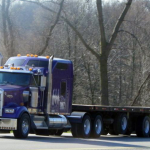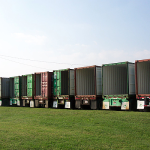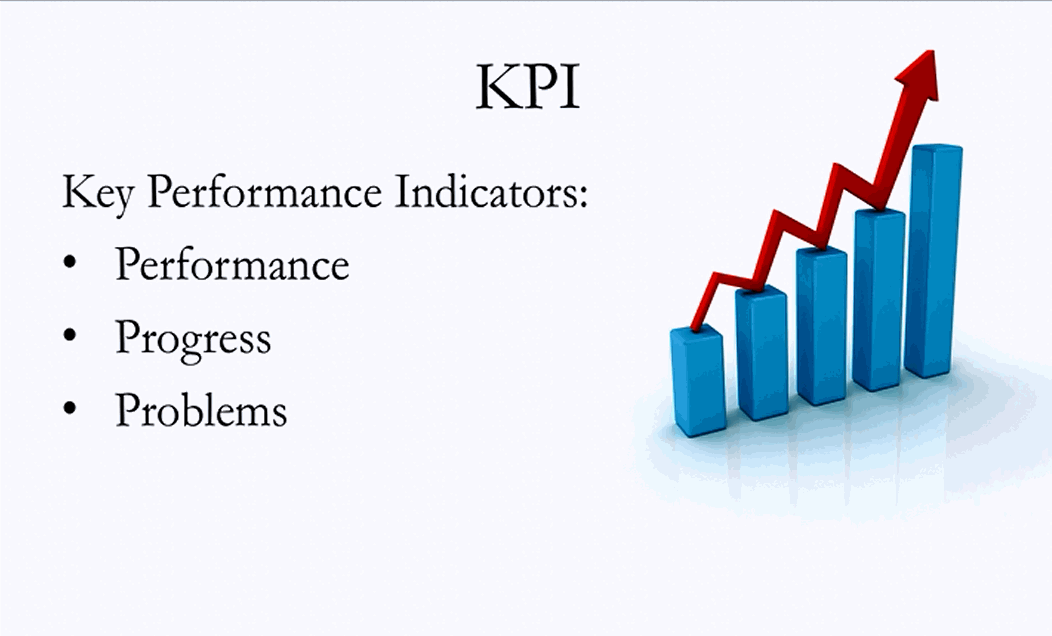
HOW TO OBTAIN BACKLOADS
Within the context of Nigeria, several yet untapped opportunities abound for any company interested in finding backloads for empty or partially laden return journeys. Operators can maximise the utilisation of returning vehicles by developing or becoming part of a business partnership that shares knowledge of load and vehicle locations, thus enabling them to be matched.
General speaking, other avenues for sourcing return loads include: Freight forwarders; Partnerships and Reverse logistics.
The mechanism used to obtain backloads could provide you with a short-term way of solving empty running. Alternatively, a long-term plan may be more appropriate to ensure consistently high levels of vehicle utilisation. It is essential to choose a mechanism for finding a back-load that suits your business and operational needs.
Freight Forwarders
Freight forwarders are primarily concerned with arranging all aspects of the movement of freight, including logistics, warehousing, customs and bonding activities. Forwarders are often not the physical carrier of the goods and can be a lucrative source of backloading, as they may offer the logistics function to hire and reward operators on a subcontract basis.
Use of a freight forwarder can be an effective source of contacts in the industry for future traffic flows. However, it is essential to ensure that the information you receive from the forwarder is correct. It is also important to check the reputability of the forwarder as they will be paying you, not the supplier of the load.
Partnerships
Two or more operators from different regions can improve their empty mileage rate by working together to co-ordinate traffic flows. This type of partnership tends to be more formal than using a return load specialist. Establishing a coordinated partnership offers more structure to obtaining backloads. The business can then be designed around the greater knowledge of traffic flows. However, it is important to define the nature of the arrangement between the two operators. It is imperative that you consider someone or a company you trust and drawing up a contract agreement may be the way to go.
Reverse Logistics
Companies sometimes look to a logistics company to help with complete packages for providing an integrated transportation and supply chain management system. Reverse logistics refers to product recovery options such as when imperfect stock is returned to the manufacturer. Often there is a need to move re-usable packaging, waste or stock from the point of consumption to the point of origin.
An increasingly common example in wholesale and retail distribution is the return of plastic trays used in the fresh food industry from a supermarket’s regional distribution centers to the packers or growers for re-use or recycling. As retailers begin to centralize their waste management, many return legs are needed to move used packaging, handling units and returned items. This traffic flow can provide additional revenue to operators by providing a back-load.
OTHER AVENUES FOR RETURN-LOADS
The following are other means for sourcing return loads which have been extensively developed in the more advanced economies but are yet to take firm root in places like Nigeria and other less developed economies.
Return-Load Specialists
 Return load specialists are typically operators that manage part of their workload by offering loads to particular areas of the country on a sub-contract basis. If your vehicle is empty in a particular region when away from its operating base, you can contact a return load specialist to obtain a back-load for the vehicle.
Return load specialists are typically operators that manage part of their workload by offering loads to particular areas of the country on a sub-contract basis. If your vehicle is empty in a particular region when away from its operating base, you can contact a return load specialist to obtain a back-load for the vehicle.
You can leverage on this option either through direct contact with operators in the region required or looking in the trade press for advertisements from organisations offering this service.
However, it is important you ensure that carrying the load does not adversely affect your regular business and that the resources allocated to the process are not excessive in proportion to the revenue and other benefits
Load-Matching Services
These organisations, also known as ‘clearing houses’, aim to match loads with available vehicles. They leverage extensively on well-developed communication technologies such as telephone and subscription-based e-business platforms to match capacity with loads in return for commission income. The system has also extended to the use of auction-based trade exchanges through which businesses are offered the opportunity to declare their shipping requirements over the Internet and tenders obtained from prospective carriers.
IS BACKLOADING FOR EVERY HAULER?
In simple terms, the answer is an affirmative No! However, the decision to or not to undertake a backload depends on the operational and commercial viability for your business. Not every offer of a back-load is acceptable. In some cases back-load rates may be too low or the route deviation required may be too large which may distort or restrict core operations.
Basically speaking, four key considerations are germane in deciding to or not to accept a backload viz:
- Operational planning and communication issues
- Cost issues and cost-effectiveness
- Customer service issues
- Contractual issues
It is essential that you are able to integrate backloads into the main operations of your delivery fleet while improving efficiency and reducing delivery costs. The better you understand your operations, the easier it is to integrate new mechanisms such as backloading. Improved communication within the fleet, with customers, other departments and transport operators, will aid this integration and maximise the benefits of backloading.
Effective planning and management are vital for successful and efficient transport and logistical operations. By developing a better understanding of your operations, you can run your business better. This knowledge will allow you to determine if backloads can and should be integrated into your procedures.
An efficient operation is a cost-effective one. The success of any business depends on ensuring that it is organised so that it makes effective use of its resources while achieving the required levels of customer service. A business cannot stand still and, as circumstances change, so must the way in which the business operates. Measuring the efficiency of your fleet will help you to determine whether there is spare vehicle capacity.
And just like we mentioned earlier, backloads comes with its baggage of costs and benefits. As such it is advisable that such sensitive relationship or collaboration be premised or founded on a properly drawn contractual document to insulate participating businesses against possible unpleasant and unplanned situations that may emerge.
CONCLUDING REMARKS
It is incontrovertible that Backloading is a prime tool to capitalise on available capacity. However, regardless of your level of spare capacity, appropriate preparations must be made for unplanned variations or delays. Resilience can be achieved by not backloading all your vehicles or, better still, by agreeing with other operators to help you out at short notice. It is also necessary that the commercial viability and operational feasibility be duly appraised. Potential benefits may be negated if backloads result in a sharp deviation from the normal operational schedule or if the additional time and distance is not well compensated for by the additional revenue. Another important variable to consider is the likely effect it may have on the customer service quality to existing clients. Where taking up backloads may result in delays or higher vehicle failures for existing contracts or jobs, caution may have to be exercised to avert breaches that may result in contract termination or expensive legal tussles.
The effective operation of commercial vehicles requires you to know what is going on, in order to identify opportunities for improvements and to be able to implement changes quickly. As the owner or manager of a fleet, you are likely to have good understanding of your vehicle operations. If backloading is a relatively new addition to your operational activities, you may prefer to undertake a number of trials. If these are successful, you can consider further integration.







